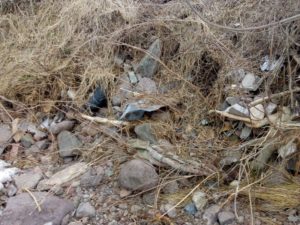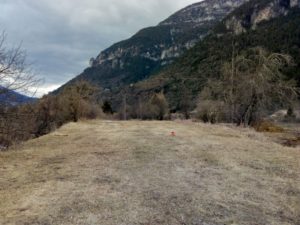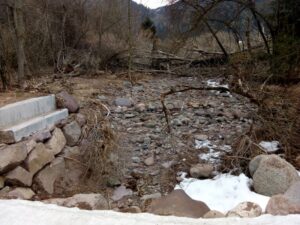 Remediation sector has recently been involved in a massive environmental restoration of a watercourse located in Val di Fiemme, heavily affected by exceptional weather events occurred in October 2018.This area is characterised by two main environmental issues strongly related: the condition of deprivation caused by the flood that has taken place last October and the presence of a former uncontrolled landfill alongside the watercourse final section. In fact, torrential rain caused the watercourse flow increase, leading to the landfill slope erosion and the waste littering.
Remediation sector has recently been involved in a massive environmental restoration of a watercourse located in Val di Fiemme, heavily affected by exceptional weather events occurred in October 2018.This area is characterised by two main environmental issues strongly related: the condition of deprivation caused by the flood that has taken place last October and the presence of a former uncontrolled landfill alongside the watercourse final section. In fact, torrential rain caused the watercourse flow increase, leading to the landfill slope erosion and the waste littering.
 Remediation team’s first assignment concerns the former landfill restoring. A preliminary site visit has been necessary to assess the landfill characteristics and morphology, alongside the interference between the landfill and the watercourse; nowadays this landfill contains solid urban waste covered by soil and vegetation. All information collected on site have been integrated with data from previous environmental surveys, allowing us to plan a capping operation, finalized to isolate and protect the landfill. Particularly, the whole landfill surface will be covered by a waterproof cover, aimed to confine the waste inside the underground, preventing the leaching caused by meteoric water and avoiding waste littering. This cover will also allow the area greening and will guarantee the site restoration from an aesthetic point of view.
Remediation team’s first assignment concerns the former landfill restoring. A preliminary site visit has been necessary to assess the landfill characteristics and morphology, alongside the interference between the landfill and the watercourse; nowadays this landfill contains solid urban waste covered by soil and vegetation. All information collected on site have been integrated with data from previous environmental surveys, allowing us to plan a capping operation, finalized to isolate and protect the landfill. Particularly, the whole landfill surface will be covered by a waterproof cover, aimed to confine the waste inside the underground, preventing the leaching caused by meteoric water and avoiding waste littering. This cover will also allow the area greening and will guarantee the site restoration from an aesthetic point of view.
In order to contain and guarantee the stability of material used for the capping installation, it’s been necessary to plan the construction of new riverbanks. These structures will be placed along the landfill southern border, which coincides with the watercourse right bank.
Since bank deflection structures will partially occupy a riverbed section, it’s became fundamental to develop a second project, designed to reshape the water body. This operation covers a great importance to deal with the deep alteration that currently characterises the watercourse, following the torrential rain. Indeed, the riverbed is partially occupied by fallen trees and some bank defences have been uprooted.
Riverbed reshaping works have been designed assessing the maximum water flow by using a finite elements hydraulic software (HEC-RAS). That allowed us to define the new watercourse morphology and verify the proper outflow in the reshaped riverbed, also during particularly intense meteorological events.
In order to guarantee a full environmental recovery, our project adds to technical and design aspects also all the improvement actions aimed to accelerate environmental restoration. Amongst them:
-riverbed structures
-bottom sediments resetting
-riverside vegetation conservation or recovery
-water quality improvement
The full deployment of all these techniques is fundamental to improve the ecological quality of the site.
Our team peculiarity consists of combining knowledge from different professional figures into a single project. This ability led us to carry out a project that has been made of three different interventions: urban waste confining, riverbed reshaping and complete environmental restoration fulfilling. Considering that our site is included in a prestigious natural context but is heavily penalised by its environmental criticalities, our intervention will provide this area a new life.
Condividi questo Articolo




